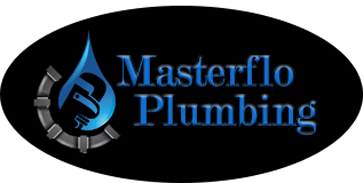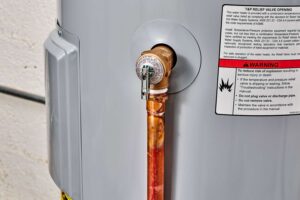When checking for leaks, start with a visual inspection of your plumbing fixtures, looking for any signs of pooling water or damaged pipes. Use the water meter technique by observing readings and checking for changes after a few hours of no water usage. Try the dye test by putting food coloring in the toilet tank to detect leaks to the bowl. Consider using infrared technology for a precise and non-invasive method of detecting hidden leaks. Performing a pressure test can also help identify leaks in your system. These DIY methods can help you uncover leaks efficiently.
Key Takeaways
- Visually inspect plumbing fixtures for leaks and damage.
- Check water meter for any changes indicating leaks.
- Perform dye test in toilet tank to detect leaks.
- Use infrared technology for accurate and non-invasive leak detection.
- Conduct pressure test by isolating the system and monitoring for leaks.
Visual Inspection
When inspecting for leaks in your home, start by visually examining all accessible plumbing fixtures and connections. Look for any signs of water pooling, dripping, or discoloration around sinks, toilets, showers, and appliances. Check for any visible cracks, rust, or corrosion on pipes, joints, and fittings. Inspect areas under sinks and cabinets, behind toilets, and around water heaters. Don't forget to examine the seals and caulking around fixtures for any gaps or deterioration.
After inspecting the visible plumbing components, move on to checking for moisture or mold growth on walls, ceilings, and floors. These could be indicators of hidden leaks within your walls or under your flooring. Pay attention to any musty odors, as they can also point towards water damage.
Remember to inspect outdoor fixtures such as hose bibs, sprinkler systems, and outdoor faucets for any leaks or excessive moisture. Check for soggy patches in your yard, as they may indicate underground leaks in your water supply lines. By conducting a thorough visual inspection, you can catch potential leaks early and prevent costly water damage in your home.
Check Water Meter
To continue your leak detection process at home, proceed by checking your water meter for any signs of potential leaks. Start by locating your water meter, typically found in the basement, garage, or near the curb. Confirm all water sources in your home are turned off. Take note of the current reading on the meter and wait for about two hours without using any water. After the waiting period, recheck the meter. If the reading has changed despite no water usage, it could indicate a leak in your plumbing system.
Sometimes, the water meter may have a leak indicator, such as a small triangle or dial that spins when water is flowing. If you notice movement in the leak indicator even when no water is being used, this suggests a leak. Additionally, a sudden increase in your water bill without a corresponding increase in usage could also point to an underlying leak issue that needs addressing.
Perform Dye Test
Consider adding a few drops of food coloring to your toilet tank to perform a dye test for detecting leaks. Start by removing the toilet tank lid and putting a few drops of food coloring into the tank. Wait for about 30 minutes without flushing. If the colored water seeps into the toilet bowl without flushing, you likely have a leak. This method helps identify if water is leaking from the tank to the bowl, indicating a faulty flapper or seal that needs replacement.
Performing a dye test is a simple yet effective way to detect leaks in your toilet. It's a cost-effective method that can help you save money on your water bill by identifying and fixing leaks promptly. Remember, even small leaks can add up to significant water wastage over time. By taking proactive steps like the dye test, you can prevent water wastage and save on your utility costs.
Utilize Infrared Technology
Curious how infrared technology can revolutionize leak detection in your home? By utilizing infrared technology, you can easily identify hidden leaks in your plumbing system without causing any damage. Here are some key benefits of using infrared technology for leak detection:
- Non-invasive: With infrared technology, there is no need to tear down walls or floors to locate leaks, making the process less disruptive and costly.
- Time-saving: Infrared cameras can quickly scan large areas and pinpoint the exact location of leaks in a fraction of the time it would take using traditional methods.
- Accurate: Infrared technology provides precise results by detecting temperature differences caused by water leaks, ensuring that no leak goes unnoticed.
Conduct Pressure Test
When conducting a pressure test to detect leaks in your plumbing system, start by ensuring all fixtures are turned off. This step is essential to get accurate results. Once everything is off, locate the main water shut-off valve and close it to isolate the plumbing system. Attach a pressure gauge to an exterior hose bib or another designated testing point. Slowly introduce air into the system using a compressor, pump, or bicycle pump. Monitor the pressure gauge to see if there is a drop in pressure. If the pressure decreases, there might be a leak in the system. Inspect visible pipes, joints, and connections for any signs of water leakage. Additionally, listen for any hissing sounds that could indicate air escaping from a hidden leak. Conducting a pressure test can help you pinpoint the location of leaks in your plumbing system, allowing for timely repairs and preventing further damage.
Inspect Roof and Gutters
To ensure your home is free from leaks, take the time to examine your roof and gutters for any signs of damage or wear. Start by visually inspecting your roof from the ground, looking for missing, cracked, or curling shingles. Check for any signs of sagging or discoloration on the roof, as these could indicate water damage. Additionally, make sure to inspect the gutters for any clogs or debris that could prevent proper drainage.
Tips for Inspecting Roof and Gutters:
- Check Shingles: Look for missing, cracked, or curling shingles that may allow water to seep through.
- Inspect Roof Structure: Watch out for any signs of sagging or discoloration, which could indicate water damage.
- Clean Gutters: Ensure gutters are free from clogs and debris to prevent water from overflowing and causing leaks.
Regularly inspecting your roof and gutters can help you catch potential issues early and prevent costly water damage in your home.
Conclusion
Masterflo Plumbing is North Georgia's most trusted plumbing company. With over 20 years of experience and staffed with master plumbers, our team is equipped and ready to serve your plumbing needs. Whether you require water heater repair or replacement, or need assistance with minor and major plumbing problems, you can rely on Masterflo Plumbing for all your plumbing needs in Cherokee County and metro Atlanta.

